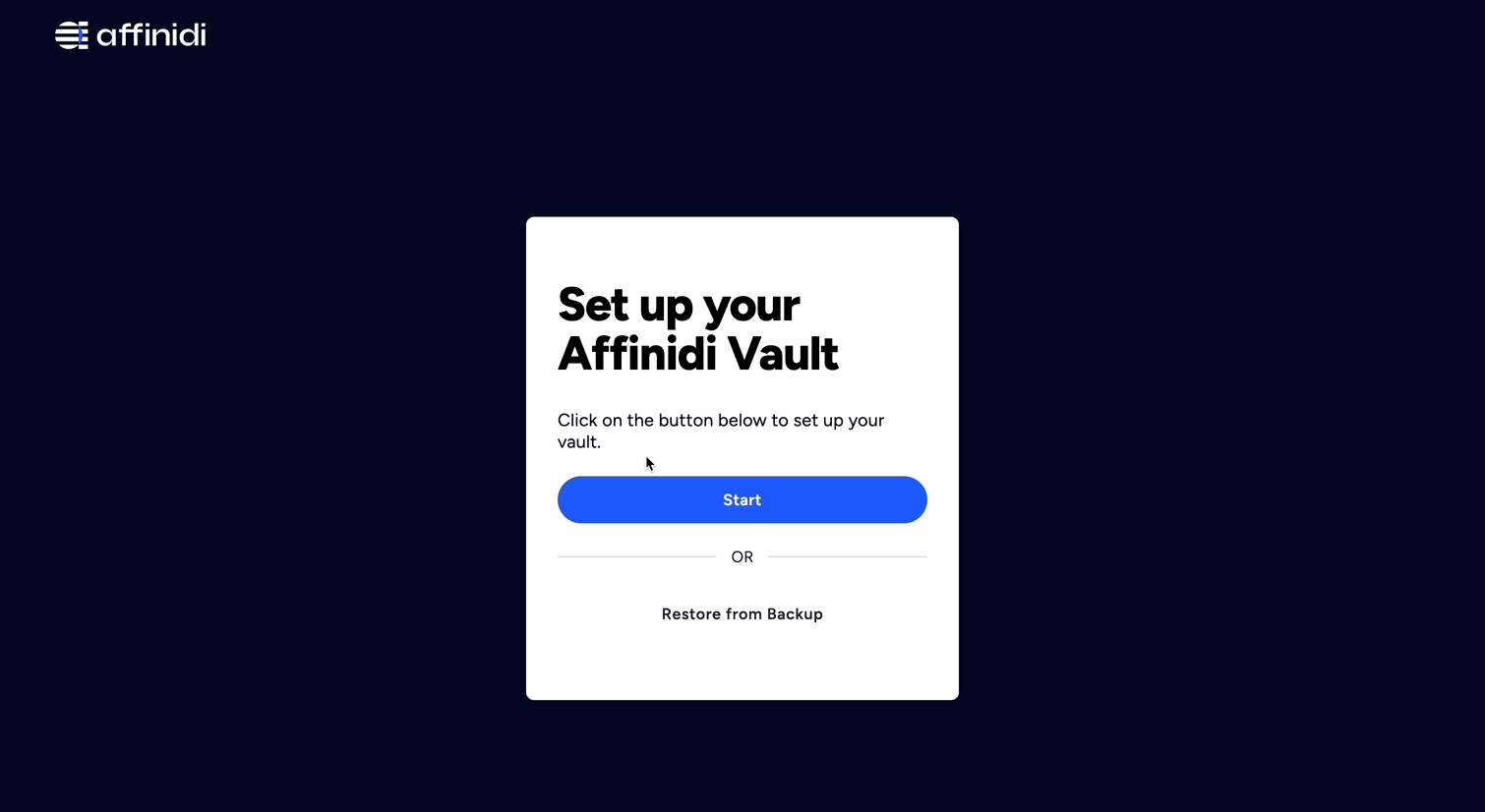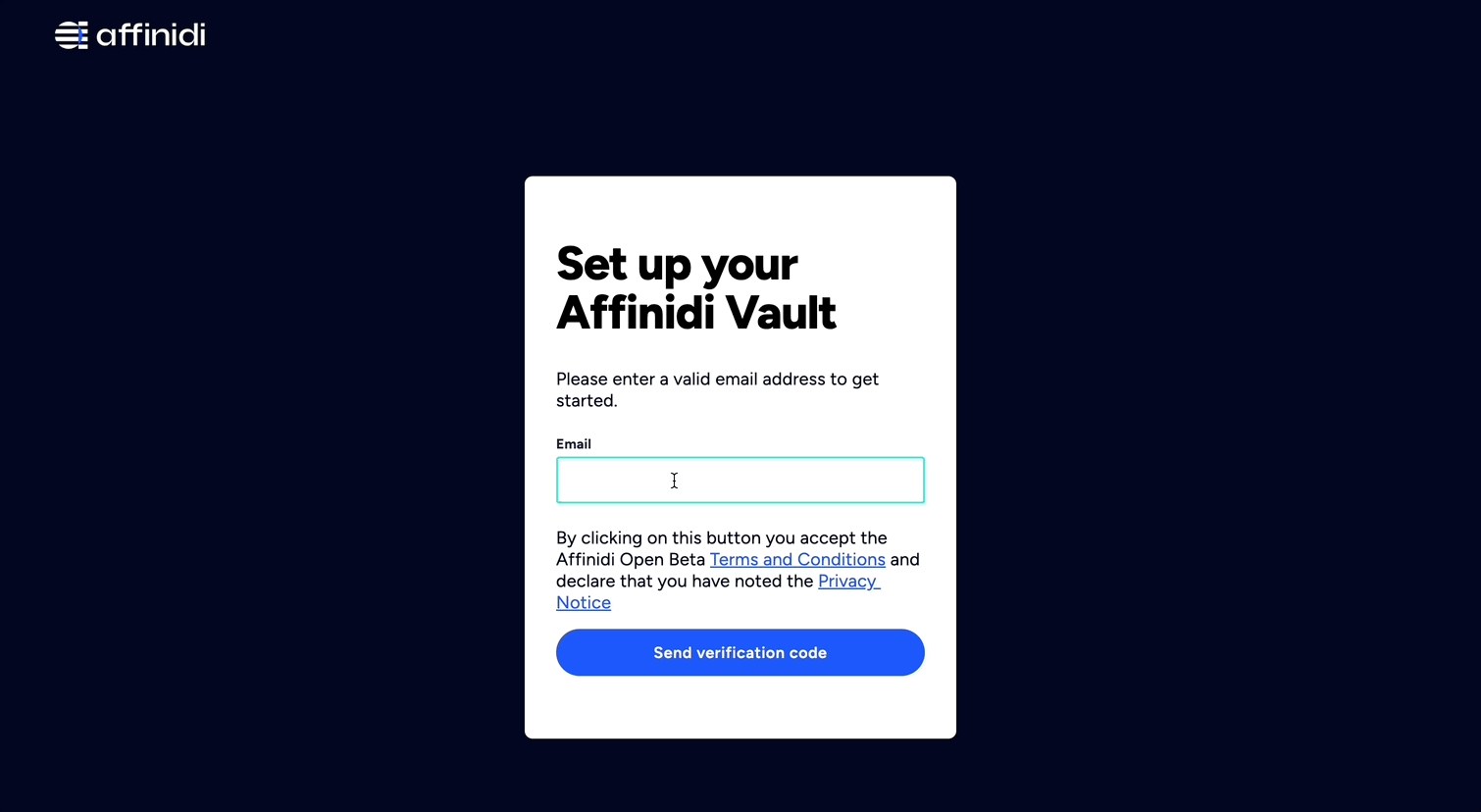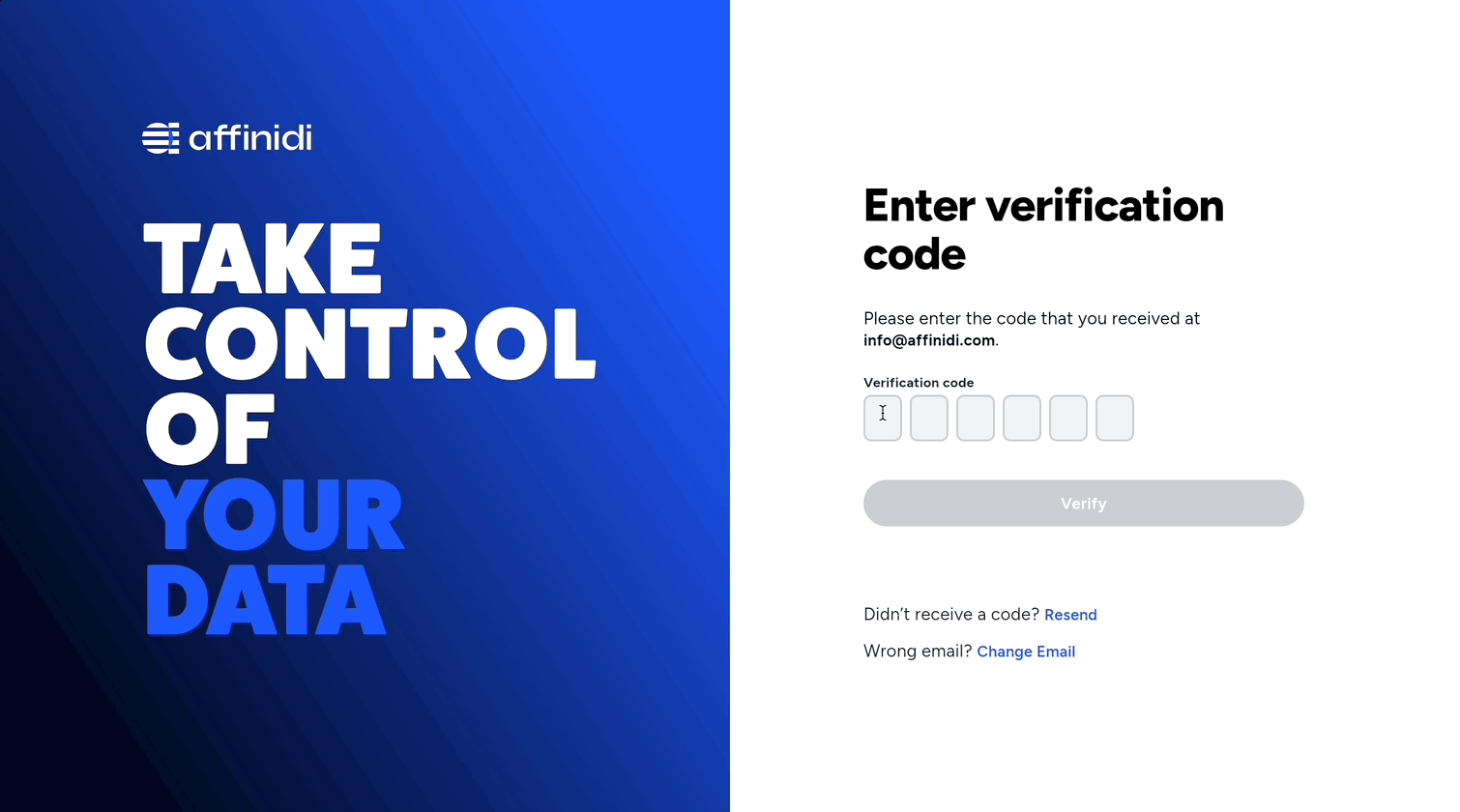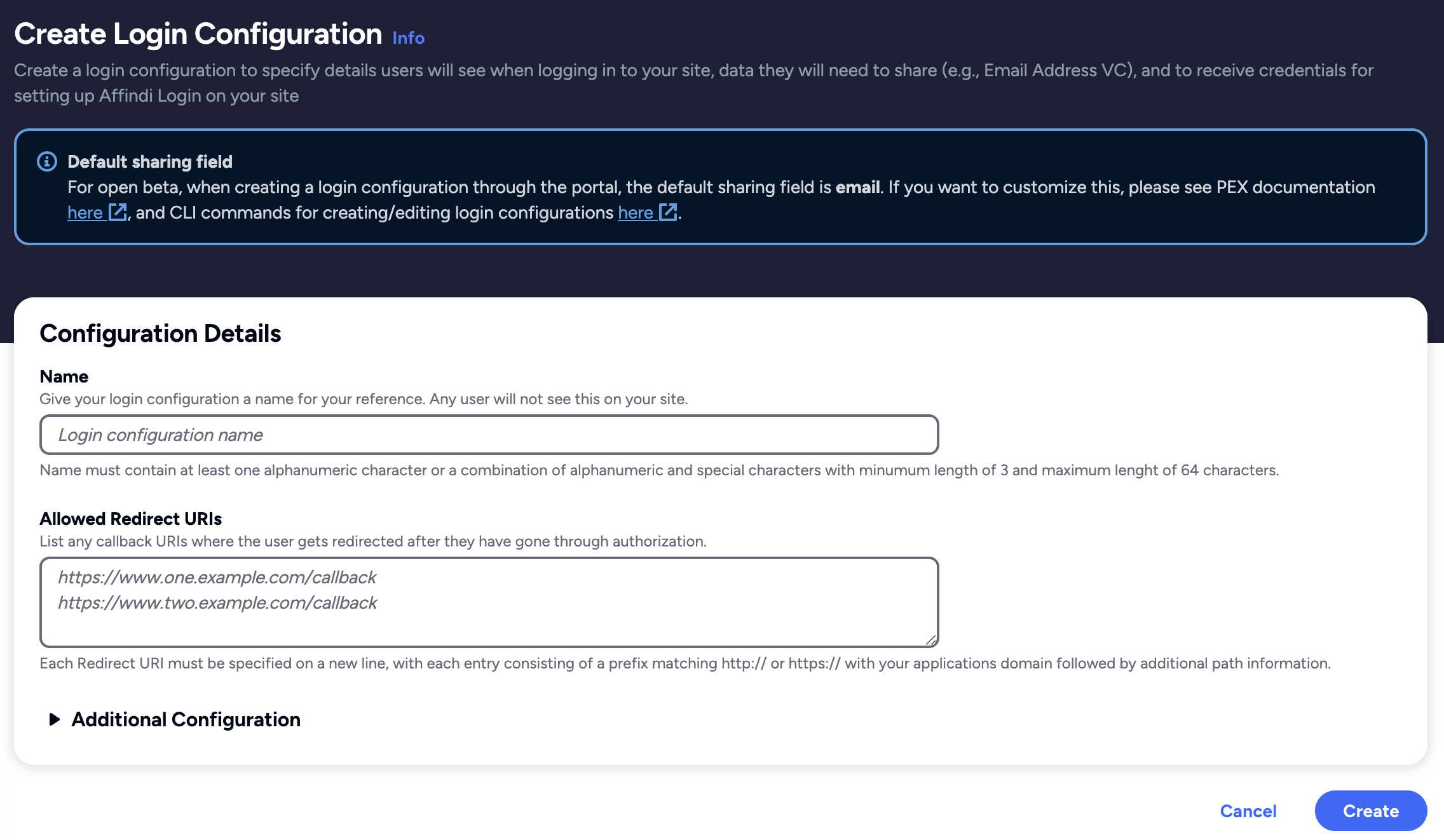Affinidi Login with .NET
The Affinidi Login is a passwordless authentication solution that verifies user identity using Affinidi Vault as the identity provider managed by the end-user.
In this lab, we will use .NET SDK 8.0 with OpenID Connect module from the available sample applications to take you through the step-by-step guide for creating a Login Configuration and setting up the application to implement passwordless authentication for end-users.
Before you begin
- Set up Affinidi Vault account. Follow the guide below if you haven’t set it up yet.
Get the Redirect URI of your application for OIDC. This is the URI configured on your Login Configuration to receive the idToken after successful authorisation.
Optionally, Install the Affinidi CLI. Follow the guide below if it hasn’t been installed.
- Install .NET SDK 8.0 on your machine if you haven’t installed yet using this guide.
Download Application
You can clone this sample application from our Github and start exploring how to integrate Affinidi Login to provide a passwordless login experience for your end-users.
Important Note
The downloadable sample application is provided only as a guide to quickly explore and learn how to integrate the components of Affinidi Trust Network into your application. This is NOT a Production-ready implementation. Do not deploy this to a production environment.Create Login Configuration
To create a Login Configuration, you can either use Affinidi CLI or 
Expand the section below for your preferred method:
.NET Sample App Settings:
Name: dotNET App
Redirect URIs: http://localhost:5068/signin-oidc
Expand the section below for your preferred method:
Login Configuration uses the default Presentation Definition (presentationDefinition) and ID Token Mapping (idTokenMapping) that is used to request the user’s email address during the authentication flow.
Learn more about customising the Presentation Definition and ID Token using this guide.
Important
Safeguard the Client ID and Client Secret diligently; you'll need them for setting up your IdP or OIDC-compliant applications. Remember, the Client Secret will be provided only once.
Set up the Sample Application
After creating the Login Configuration required to set up the sample application. Let’s start setting up the .NET application by configuring the following settings:
Configure Env Variables
Create the .env file using the following command:
cp .env.example .envSet the environment variables based on the auth credentials received from the Login Configuration created earlier:
{
"auth": {
"clientId": "<AUTH.CLIENT_ID>",
"clientSecret": "<AUTH.CLIENT_SECRET>",
"issuer": "https://<PROJECT_ID>.apse1.login.affinidi.io"
}
}Set the following fields in the .env file
PROVIDER_CLIENT_ID="<AUTH.CLIENT_ID>"
PROVIDER_CLIENT_SECRET="<AUTH.CLIENT_SECRET>"
PROVIDER_ISSUER="<AUTH.CLIENT_ISSUER>"Build and Run
dotnet build
dotnet runAfter successfully running the command, go to http://localhost:5068/ to access the page with the Affinidi Login button.
Key Changes to Sample Application
Enabling Affinidi Login
In the Startup.cs, we have added the OpenID Connect and set the client credentials and issuer URL generated after creating Login Configuration.
using System.IdentityModel.Tokens.Jwt;
using Microsoft.AspNetCore.Authentication.OpenIdConnect;
using Microsoft.AspNetCore.Authentication.Cookies;
using Microsoft.IdentityModel.Protocols.OpenIdConnect;
using Microsoft.IdentityModel.Tokens;
namespace Affinidi_Login_Demo_App;
public class Startup
{
public IWebHostEnvironment Environment {get; }
public IConfiguration Configuration {get; }
public Startup(IWebHostEnvironment environment, IConfiguration config) {
Environment = environment;
Configuration = config;
DotNetEnv.Env.Load();
}
// This method gets called by the runtime. Use this method to configure the HTTP request pipeline.
public void Configure(IApplicationBuilder app, IWebHostEnvironment env)
{
app.UseRouting();
app.UseAuthentication();
app.UseAuthorization();
app.UseStaticFiles();
app.UseEndpoints(endpoints => {
endpoints.MapRazorPages();
});
}
public void ConfigureServices(IServiceCollection services)
{
// Prevent WS-Federation claim names being written to tokens
JwtSecurityTokenHandler.DefaultInboundClaimTypeMap.Clear();
services.AddAuthentication(options => {
options.DefaultScheme = CookieAuthenticationDefaults.AuthenticationScheme;
options.DefaultChallengeScheme = OpenIdConnectDefaults.AuthenticationScheme;
})
.AddCookie(CookieAuthenticationDefaults.AuthenticationScheme, options => {
// Use the strongest setting in production, which also enables HTTP on developer workstations
options.Cookie.SameSite = SameSiteMode.Strict;
})
.AddOpenIdConnect(options => {
// Use the same settings for temporary cookies
options.NonceCookie.SameSite = SameSiteMode.Strict;
options.CorrelationCookie.SameSite = SameSiteMode.Strict;
options.SignInScheme = CookieAuthenticationDefaults.AuthenticationScheme;
// Set the main OpenID Connect settings
options.Authority = System.Environment.GetEnvironmentVariable("PROVIDER_ISSUER");
options.ClientId = System.Environment.GetEnvironmentVariable("PROVIDER_CLIENT_ID");
options.ClientSecret = System.Environment.GetEnvironmentVariable("PROVIDER_CLIENT_SECRET");
string scopeString = System.Environment.GetEnvironmentVariable("SCOPE");
options.ResponseType = OpenIdConnectResponseType.Code;
options.ResponseMode = OpenIdConnectResponseMode.Query;
options.Scope.Clear();
scopeString?.Split(" ", StringSplitOptions.TrimEntries).ToList().ForEach(scope => {
options.Scope.Add(scope);
});
// If required, override the issuer and audience used to validate ID tokens
options.TokenValidationParameters = new TokenValidationParameters
{
ValidIssuer = options.Authority,
ValidAudience = options.ClientId
};
// This example gets user information for display from the user info endpoint
options.GetClaimsFromUserInfoEndpoint = true;
// // Handle the post logout redirect URI
// options.Events.OnRedirectToIdentityProviderForSignOut = (context) =>
// {
// context.ProtocolMessage.PostLogoutRedirectUri = Configuration.GetValue<string>("OpenIdConnect:PostLogoutRedirectUri");
// return Task.CompletedTask;
// };
// Save tokens issued to encrypted cookies
options.SaveTokens = true;
// Set this in developer setups if the OpenID Provider uses plain HTTP
options.RequireHttpsMetadata = false;
/* Uncomment to debug HTTP requests from the web backend to the Identity Server
Run a tool such as MITM proxy to view the request and response messages
/*options.BackchannelHttpHandler = new HttpClientHandler()
{
Proxy = new WebProxy("http://127.0.0.1:8888"),
UseProxy = true,
};*/
});
services.AddAuthorization();
services.AddRazorPages();
// Add this app's types to dependency injection
services.AddSingleton<TokenClient>();
}
}We have also defined the Data Model in the AffinidiDataModel.cs to store the user info parsed from the ID Token that Affinidi Login will send.
namespace Affinidi_Login_Demo_App;
public class AffinidiDataModel
{
public string? given_name {get;set;}
public string? family_name {get;set;}
public string? did {get;set;}
public string? email {get;set;}
// public string?
}Summary
sequenceDiagram
actor User
participant .NET
participant Affinidi Login
participant Affinidi Vault
participant Affinidi Verifier
User->>.NET: My Login
.NET->>Affinidi Login: Authenticate user
Note over .NET, Affinidi Login: login_challenge
Affinidi Login->>Affinidi Vault: Verify user identity
Note over Affinidi Login, Affinidi Vault: presentationDefinition
Affinidi Vault->>User: Request user confirmation to share Email VC
User->>Affinidi Vault: User confirmed consent to share Email VC
Affinidi Vault->>Affinidi Vault: Generate VP Token from VC
Affinidi Vault->>Affinidi Login: Send Email VP Token
Affinidi Login->>Affinidi Verifier: Validate VP Token
Note over Affinidi Login, Affinidi Verifier: vp_token, presentation_submission, presentation_definition
Affinidi Login->>Affinidi Login: Generate idToken
Affinidi Login->>.NET: Send generated idToken from VP
.NET->>User: Provide access to the userUsing the .NET SDK 8.0 with OpenID Connect as the sample application, we have configured it to integrate with Affinidi Login as the Auth provider and parse the idToken sent by the Affinidi Login to confirm the user’s successful authentication using the Affinidi Vault.
Glad to hear it! Please tell us how we can improve more.
Sorry to hear that. Please tell us how we can improve.
Thank you for sharing your feedback so we can improve your experience.




